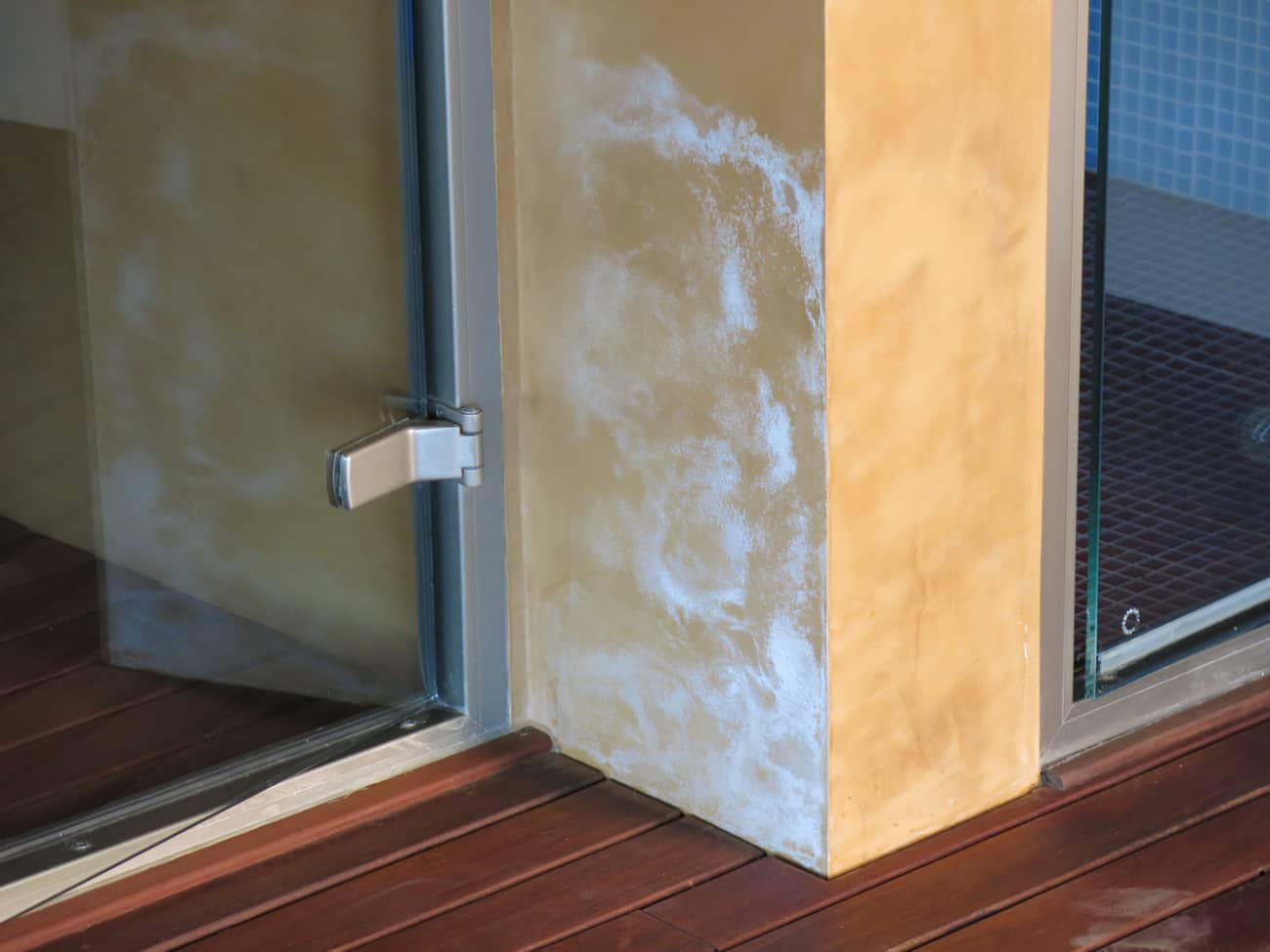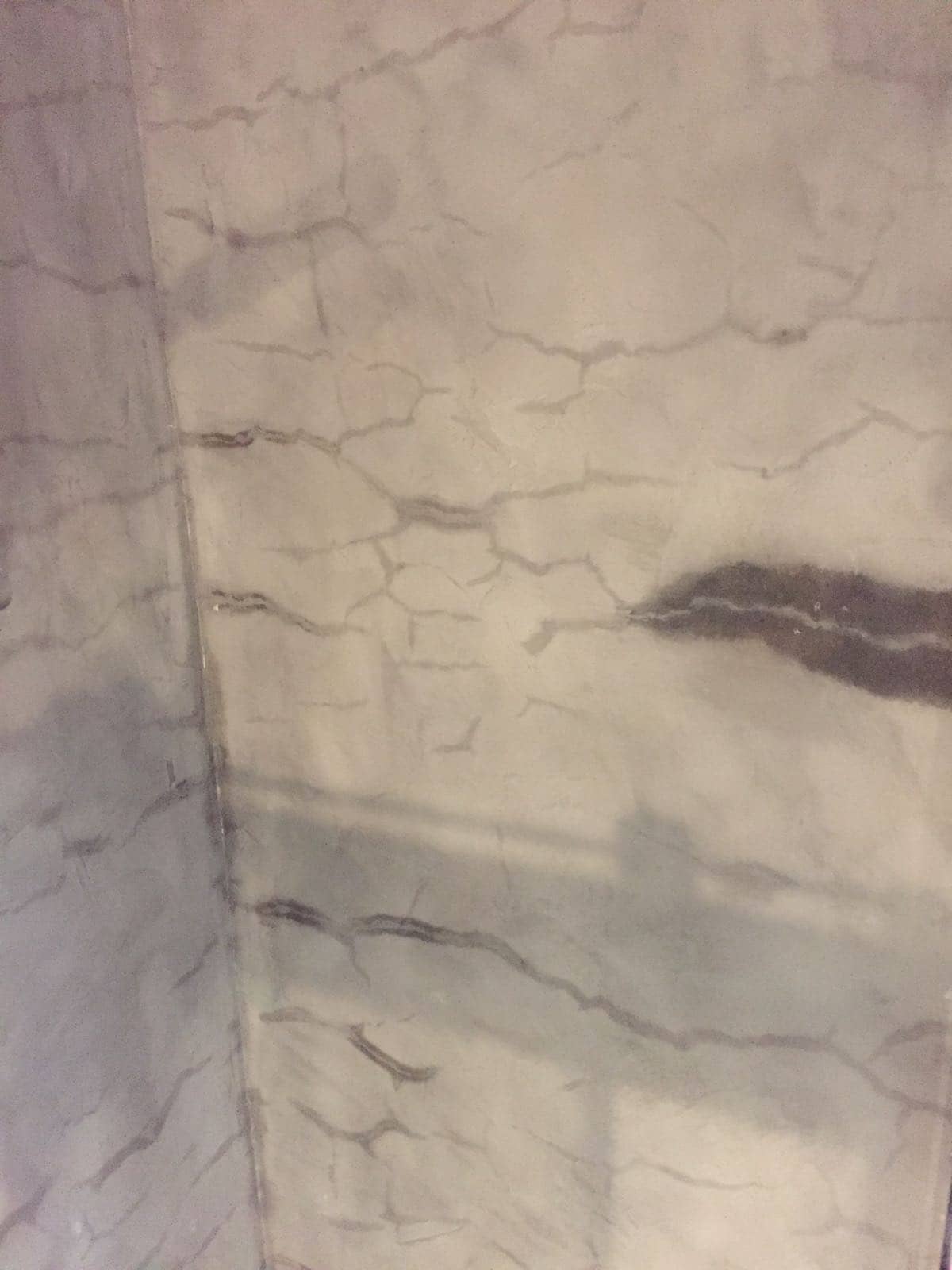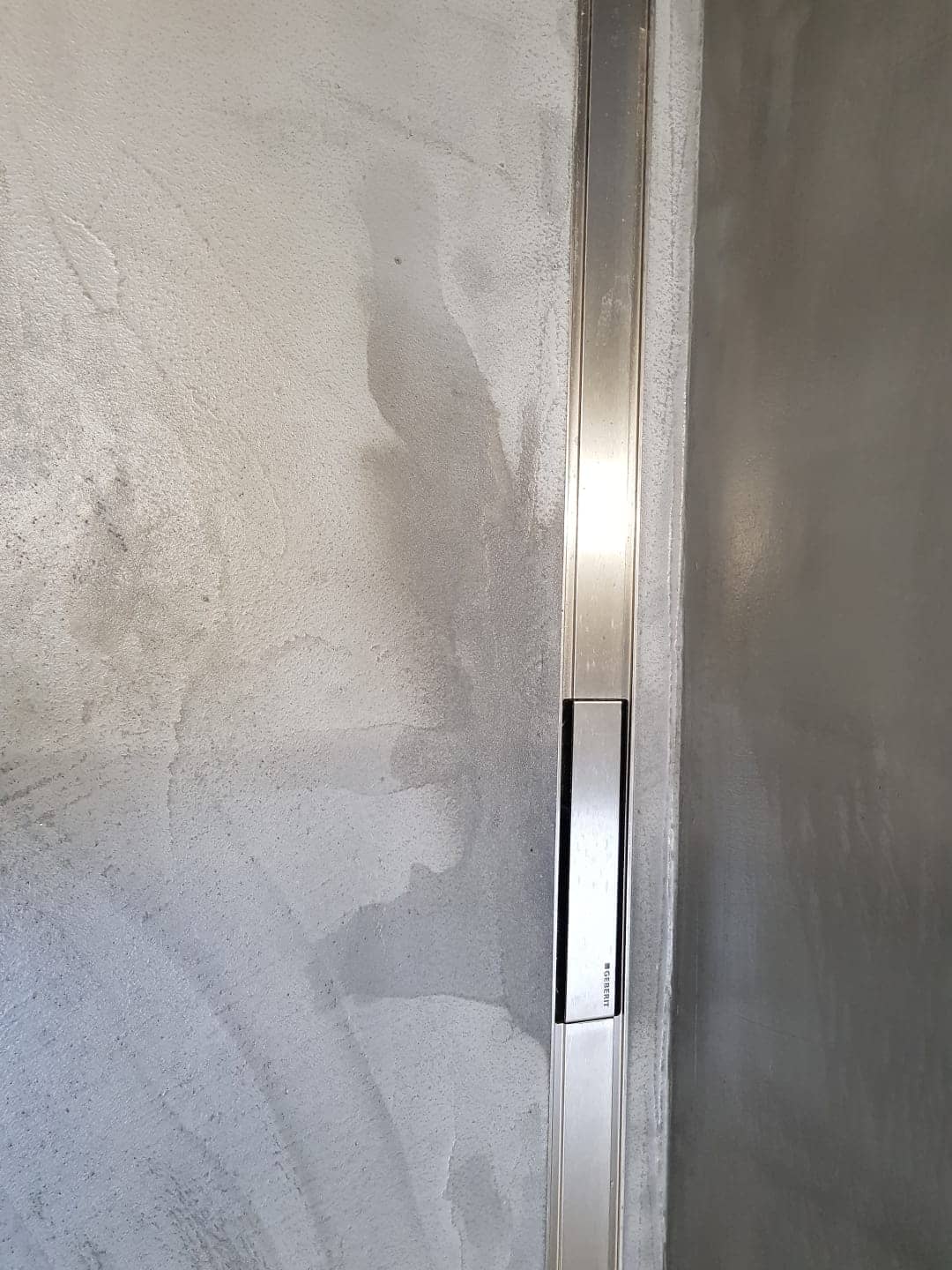Microcement and humidity: perfect coexistence
The construction industry is constantly evolving and, as such, is always looking for new materials and
This is a material made of cement, aggregates and additives, which makes it very resistant to moisture and is ideal for use in areas that are prone to suffer these environmental conditions, such as bathrooms and kitchens. Microcement is a very popular option for those looking for a alternative to traditional materials such as tile and paint. It is very durable, so it does not peel or damage easily. It is also very easy to clean and maintain, which makes it ideal for high traffic areas or where the environmental humidity is very high.
In summary, microcement is a very durable material, resistant to moisture, easy to clean and maintain, and very versatile. If you are looking for an alternative to traditional materials, this coating is an ideal option and in this news we are going to see why.
Benefits of microcement, in general
Microcement is a material composed of cement, sand, water and additives that is used to coat surfaces. It is a very versatile product that can be applied both indoors and outdoors and that in any of them provides great resistance to smooth and subtle surfaces to the eye.
Although microcement is a relatively new product, it is increasingly being used in construction and decoration, as it offers numerous advantages over other materials such as traditional cement or tiles. Below, we present this series of virtues to get to know this material more deeply.
1. Microcement, versatile above all
Microcement is a very versatile material that can be used on both walls and floors. In fact, more and more individuals are using it to cover the entire house, from the kitchen to the bathroom.
2. It's very resistant
Another major advantage of microcement is its great resistance. It is a very hard and compact material, which makes it ideal for coating walls and high traffic floors, such as the kitchen or the bathroom, rooms through which the inhabitants of a house pass daily with great regularity.
3. It's very easy to maintain
Microcement has great ease of maintenance, as it does not require any special care. It is enough to clean it with water and neutral PH soap to remove the dirt. If the stains on a surface of this coating are more aggressive and do not go away, professional cleaners can always be used, products that enable the removal of tougher stains with great ease.

4. It's very durable
Microcement is a very durable material, which means that once you apply it in your home, you will not need to do any kind of maintenance for many years. In fact, it is a material that can last more than 50 years without needing any kind of maintenance.
5. It has an economical price
Despite all the advantages of applying a material like microcement, we are dealing with an economical material, when we talk about the product itself. But we must take into account that another thing is the price of an application, in general, which will depend, economically speaking, on multiple factors such as the difficulty of the work, the meters to be coated or the quality of the professionals, among others.
6. Its simplicity of application is astonishing
Microcement is very easy to apply. Firstly, this is because it adheres very well to any type of support or surface. Secondly, it is a very workable material, due to its reduced weight, which facilitates its application on vertical and horizontal areas. In addition, it does not require any type of special tool for its use.
7. It is heat resistant
This aspect makes it a very used material in rooms such as kitchens, for perfectly withstanding heat, which makes it ideal for placing it on countertops ensuring that the coated surface does not crack, nor do cracks appear on it.
8. Does not require special care
As we have already mentioned, microcement does not require any special care, it is enough to clean it with water and neutral pH soap to remove the dirt. However, it is important to avoid using strong chemicals or polishers, as they could damage the coating.
9. Aesthetically it is very modern
Microcement combines modernity with elegance, being a material of great subtlety. This is what makes it ideal for achieving multiple decorative styles but always providing its minimalist touch. This coating is being used, increasingly, in homes and offices around the world.
Water resistance: the great virtue of microcement against humidity
One of the main advantages of microcement is its high water resistance and, consequently, to humidity when applying a sealer as a finish.
By applying this product, we create a layer that protects surfaces from moisture by capillarity condensation or by filtration, among other threats that usually occur in the most humid rooms.
Having a very high degree of water resistance, microcement is the ideal coating for covering spaces such as kitchens, bathrooms or terraces, where the presence of moisture is very common and in others where contact with water is constant such as pools, spas and saunas, as it is not damaged because moisture is not able to penetrate the coating.
For the microcement to have a very high level of alkali resistance, it is important to apply it correctly. By following the process optimally, respecting drying times and applying the sealing varnish, we will obtain areas completely resistant to water or moisture.
What types of humidity exist?
Next, we are going to analyze what types of humidity can occur in walls and floors, both in domestic spaces and in businesses or companies.

Capillarity humidity
Capillary humidity is the consequence of the accumulation of water in the area that is located below the ground. These usually occur in seasons when rainfall is higher and cause water to have difficulty circulating and stagnates, which causes it to be absorbed by the slabs or the foundations of the buildings.
Being porous materials, the water ends up filtering until it enters both partitions and facades but do not stay there; in fact, moisture also spreads through pillars and load-bearing walls that are closer to the ground. This is the reason why the lower areas of the buildings are more prone to accumulate moisture.
In these cases, your walls absorb the water from the ground and dissolve its salts. When the accumulated water evaporates, the salts crystallize and form those characteristic white-toned stains. On the floor, it usually manifests in the joints of the tiles with black colored stains.
Condensation humidity
Condensation is a phenomenon where the water vapor in the air turns into liquid, it condenses, when it comes into contact with a surface that is at a lower temperature.
In homes, humidity caused by condensation occurs when the internal temperature of the house is higher than the external temperature, and appears, first of all, on windows, walls and/or ceilings.
Condensation humidity occurs in a very unique way. Thus, it takes the form of mist or water droplets, positioning itself on the windows. On the other hand, it can also take the form of black mold stains that appear on walls and ceilings. This phenomenon usually brings with it the characteristic smell of dampness.
And, why does this process occur? It is usually due to not maintaining optimal ventilation in the house. This is necessary when cooking, after a shower or when hanging out inside a house. Thus, by ventilating, it prevents the formation of the fog that represents the humidity of the environment.
Detecting the source of moisture is very important as this problem can also come from the structure of the house itself. In this case, it may be due to the walls or ceiling not being properly insulated.
Humidity by filtration
Another type of humidity that is usually common in both homes and business or industrial buildings is humidity by filtration. And, how does this type of humidity appear? When water penetrates a surface, from the outside to the inside of the house, which passes through cracks or crevices. This usually occurs due to poor waterproofing of the facades, turning these into the entrance door, through which water slides down to the basement.
Normally, moisture stains from filtration are very easy to detect as they manifest as black stains or mold on the affected surfaces.
What are the most humid spaces in a house?
Not all rooms in a house are exposed to the same levels of humidity. The activities we carry out in the different spaces and their location in the house, are what determine whether they will suffer from humidity or not.
For example, the basement, being in the lowest area of the house, below ground level, are usually areas where the smell of dampness and stains on the walls are quite common.
Another space would be the bathrooms. Showering or taking a bath are actions that we perform daily but that inherently carry the production of humid environments, due to the temperature change between the water we use, much hotter, and the degrees in the environment, which are below.
Las cocinas también son una de las estancias que más sufren problemas de humedad. Al cocinar se puede producir vaho, si no se utiliza la tapa. Esta se posa sobre las paredes o las encimeras, pudiendo filtrar, dañando estas superficies.
Microcement, a great solution against humidity
As we previously mentioned, microcement, when applied with a sealing varnish, is a material resistant to running water, which makes it a coating that guarantees the best appearance of the surfaces on which it is used for an unlimited time, restricting the appearance of the consequences of humidity.

Thus, microcement is an ideal coating to apply in spaces that suffer from types of filtration and condensation humidity, where the humidity comes from the front of the areas. In this way, in kitchens, bathrooms and facades, the problem of humidity is solved, as it has a water resistance much higher than that of other materials in the sector.
It should be noted that in order to apply microcement on a surface where there is humidity, it must be repaired. To do this, in the first instance we will have to detect the problem, because this can decrease the adhesion of the coating to the support and, on the other hand, humidity will continue to appear from time to time, as long as the root problem is not solved.
In the case of capillarity humidity, which after minimizing the setback, repairing as much as possible the most damaged areas, it will be necessary to opt for the application of anti-humidity products.
Topsealer: our microcement sealers against moisture
At Topciment, as experts, we know that microcement is a decorative coating and that, as such, it can suffer the appearance of harmful external factors such as humidity.
But we have always taken it into account and, therefore, we have a very extensive range of sealers with excellent technical attributes that, when applied to microcement, are capable of creating areas with great resistance to alkalis, protecting surfaces from water contact and, therefore, from the appearance of dampness.
Our Topsealer collection is made up of water-based acrylic polyurethane varnishes,of high quality and with specific features to be applied even on swimming pools, as is the case with Topsealer WT Pool.
We invite you to get to know both our microcements and our sealers and, if you have any questions, ask us. We will be delighted to assist you.
Subscribe to our newsletter
Receive in your email tips for the application and care of microcement, the latest trends and news from Topciment products.




